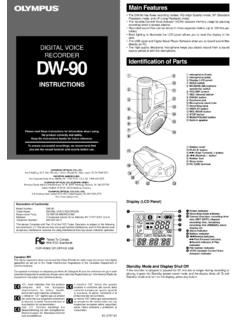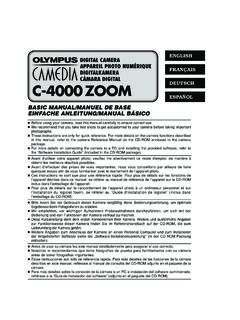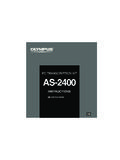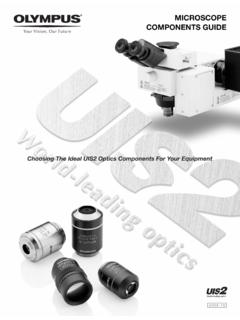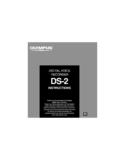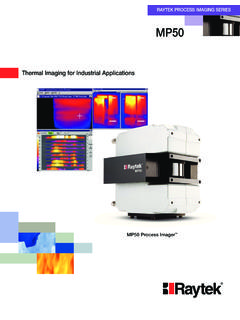Transcription of FLUOVIEW—Always Evolving
1 Confocal Laser Scanning Biological MicroscopeFV1000 FLUOVIEWFLUOVIEW always Evolving1 fluoview FromOlympus is OpenFLUOVIEW More advanced than EverThe Olympus fluoview FV1000 confocal laser scanning microscope deliversefficient and reliable performance together with the high resolution required formulti-dimensional observation of cell and tissue morphology, and precisemolecular localization. The FV1000 incorporates the industry s first dedicatedlaser light stimulation scanner to achieve simultaneous targeted laser stimulationand imaging for real-time visualization of rapid cell responses. The FV1000 alsomeasures diffusion coefficients of intracellular molecules, quantifying molecularkinetics. Quite simply, the fluoview FV1000 represents a new plateau, bringing imaging to analysis.
2 Olympus continues to drive forward the development of fluoview microscopes, using input from researchers to meet their Evolving demands andbringing imaging to analysis. Quality Performance with Innovative Design FV10i2 imaging to Analysising up New WorldsFrom imaging to AnalysisFV1000 advanced Deeper imaging with High Resolution FV1000 MPEA dvanced fluoview Systems Enhance the Power ofYour ResearchSuperb Optical Systems Set the Standard for Accuracy and types of detectors deliver enhanced accuracy and sensitivity, and are paired with a new objective with low chromatic aberration, to deliver even better precision for colocalization optical advances boost the overall system capabilities and raiseperformance to a new , Stimulation and Measurement advanced Analytical Methods for equipped to measure the diffusion coefficients of intracellularmolecules.
3 For quantification of the dynamic interactions of molecules inside live cell. fluoview opens up new worlds of Systems Meet the Demands of Your system with optional hardware and software to meet the demands of your combiner/FiberDiode LaserGreater stability, longer service life andlower operating cost are achieved usingdiode Feedback Control Scanner unit is equipped with laser powermonitor for feedback control enhancingstable laser CompatibilityDiode laser :405 nm, 440 nm, 473 nm, 559 nm, 635 nmGas laser :Multi-line Ar laser (458 nm, 488 nm, 515 nm)HeNe(G) laser (543 nm)Broadband FiberBroadband fiber connection for 405 635 nmlasers, to achieve an ideal point light sourcewith minimal color shift and position shiftbetween filterConfocal pinholeGratingAOTFL aser combinerMain scannerBroadband fiber *Broadband fiberExcellent Precision, Sensitivity and Stability.
4 fluoview Enables Precise, Bright imaging with Minimum PhototoxTwo versions available. Single fiber-type combiner is used formain scanner FV1000 with up to six lasers,ranging from 405 to 635 nm. Dual fiber-type combiner is used for laserlight stimulation with main and SIMscanner CombinerScanners/DetectionHigh Sensitivity Detection SystemHigh-sensitivity and high S/N ratio opticalperformance is achieved through theintegration of a pupil projection lens, useof a high sensitivity photomultiplier tubeand an analog processing circuit withminimal noise. Enables high S/N ratioimage acquisition with minimal laser powerto reduce to Four PMT ChannelsThree integrated confocal PMT detectors,and optional module with fourth confocalPMT expandable up to four PMT Versions of Light Detection System Spectral detection for high-precisionspectroscopy with 2 nm resolution.
5 Filter detection equipped with highquality filter Scanning UnitFilter Scanning Unit5 Technology / HardwareIX81 PMTPMTPMTG alvanometerscanning mirrorsGalvanometerscanning mirrorsUIS2 objectivesSpecimenPupil projection lens SIM Scanner * SystemMotorized MicroscopesCompatible with Olympus IX81 invertedmicroscope, BX61WI focusing nosepieceand fixed-stage upright microscope, andBX61 upright and SpecimensSupports a Wide Range of Samples and SpecimensTissue culture dishes, slide chambers,microplates and glass slides can be usedwith live cells and fixed ObjectivesOlympus UIS2 objectives offer world-leading, infinity-corrected optics thatdeliver unsurpassed optical performanceover a wide range of wavelengths. High S/N Ratio Objectives with Suppressed AutofluorescenceOlympus offers a line of high numericalaperture objectives with improvedfluorescence S/N ratio, includingobjectives with exceptional correction forchromatic aberration, oil- and water-immersion objectives, and total internalreflection fluorescence (TIRF) * OptionSpectral Based DetectionFlexibility and High SensitivitySpectral detection using gratingsfor 2 nm wavelength resolutionand image acquisition matched tofluorescence wavelength adjustable bandwidth ofemission spectrum for acquiringbright images with minimal cross-talk.
6 Precise Spectral imaging The spectral detection unit uses a grating method that offerslinear dispersion compared with prism dispersion. The unitprovides 2 nm wavelength resolution to high-sensitivityphotomultiplier tube detectors. Fluorescence separation can beachieved through unmixing, even when cross-talk is generatedby multiple fluorescent dyes with similar ,0001,2001,4001,6001,8002,0002,2002,4002 ,600 EGFP (dendrite) EYFP (synapse)XY Wavelength detection range: 495 nm 561 nm in 2 nm stepsExcitation wavelength: 488 nmCourtesy of: Dr. Shigeo OkabeDepartment of Anatomy and Cell Biology, Tokyo Medical and Dental UniversityEGFP EYFP Fluorescence SeparationEYFPEGFP480 Conventional mirror unitHigh-performance mirror unit500520540560580 Wavelength (nm)60062064066068070002040 Transmittance (%)6080100DM488/543/633 ComparisonTwo Versions of Light Detection System that Set New Standardsfor Optical Based DetectionEnhanced Sensitivity Three-channel scan unit with detection system featuring hardcoated filter base.
7 High-transmittance and high S/N ratio opticalperformance is achieved through integration of a pupil projectionlens within the optics, the use of a high sensitivity photomultiplierand an analog processing circuit with minimal Filters Deliver Outstanding SeparationSpecial coatings deliver exceptionally sharp transitions to adegree never achieved before, for acquisition of brighterfluorescence / HardwareSIM (Simultaneous) Scanner UnitCombines the main scanner with a dedicated laser lightstimulation scanner for investigating the trafficking of fluorescent-labeled molecules and marking of specific live Laser Light Stimulation and ImagingPerforms simultaneous laser light stimulation and imaging toacquire images of immediate cell responses tostimulation in photobleaching experiments.
8 Modifiable Stimulation Area During ImagingThe stimulation area can be moved to a different position on thecell during imaging , providing a powerful tool for photoactivationand photoconversion Choice of Bleaching ModesVarious scan modes can be used for both the observation areaand stimulation area. Enables free-form bleaching of designatedpoints, lines, free-lines, rectangles and Scanner Unit for Simultaneous Laser Light Stimulation of laser inlaser are used for both imagingand laser light Laser Combiner All lasers can be used for both imaging and laser light / LD635 / AOTF / AOTF / LD473 / LD559 Laser Sharing with Main ScannerDual fiber laser combiner provides laser sharing between the SIMscanner and main scanner, eliminating the need to add a separate laser for "Tornado" Scanning for Efficient BleachingConventional raster scanning does not always completephotobleaching quickly.
9 Tornado scanning greatly improvesbleaching efficiency by significantly reducing unnecessaryscanning.*Tornado scanning only available for SIM scanningSuperfluous scanning (region of interest)scanningROI (region of interest) membrane stained with DIO, and subjected to bothconventional ROI and tornado Chromatic Aberration ObjectiveBest Reliability for Colocalization AnalysisA new high NA oil-immersion objective minimizes chromaticaberration in the 405 650 nm region for enhanced imagingperformance and image resolution at 405 nm. Delivers a highdegree of correction for both lateral and axial chromaticaberration, for acquisition of 2D and 3D images with excellentand reliable accuracy, and improved colocalization analysis. Theobjective also compensates for chromatic aberration in the nearinfrared up to 850 Objective with Low Chromatic Aberration DeliversWorld-Leading imaging Chromatic PLAPON60xOSCA berration Objective Magnification: 60xNA: (oil immersion) : mmChromatic aberration compensation range.
10 405 650 nmOptical data provided for each imageTubulin in Ptk2 cells labeled withtwo colors (405 nm, 635 nm) Flatness and Resolution at 405 nmBetter flatness reduces the number of images for plane ( m) Chromatic AberrationWavelength (nm)500550600650 PLAPON 60xOSCUPLSAPO60xOUPLSAPO60xOChromatic Aberration Comparison for PLAPON 60xOSC and UPLSAPO 60xOPerformance Comparison of PLAPON 60xOSC and UPLSAPO 60xOPLAPON60xOSCA xial chromaticaberration (Z direction)Compared for PSF fluorescentbeads (405 nm, 633 nm).Lateral chromaticaberration (X-Y direction) Compared for PSF fluorescentbeads (405 nm, 488 nm, 633nm).*Chromatic aberration values are design values and are not guaranteed values. Lateral and Axial Chromatic AberrationSmall Degree of Chromatic AberrationLarge Degree of Chromatic AberrationAxial chromaticaberration (Z direction).

